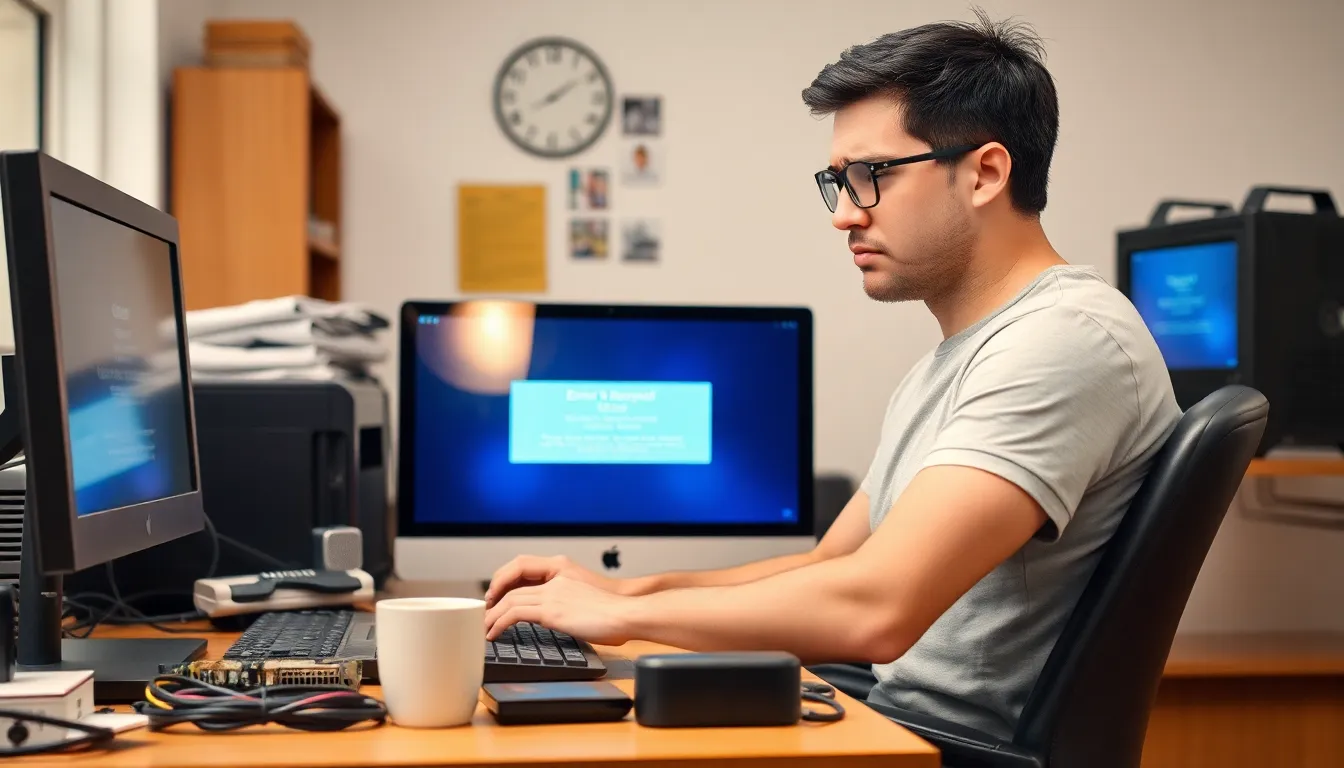In a world where sharing is caring, showing off what’s on your iPhone screen can feel like a superpower. Whether it’s giving a virtual tour of your latest vacation pics or demonstrating that new app to your friends, screen sharing can make communication a breeze. But wait—how do you pull off this tech trick without turning into a digital magician fumbling with a deck of cards?
Fear not! With just a few taps, you can become the screen-sharing guru everyone admires. This guide will walk you through the process, ensuring you impress your audience while keeping your cool. So grab your iPhone, and let’s dive into the world of screen sharing—because who wouldn’t want to show off their epic meme collection?
Table of Contents
ToggleUnderstanding Screen Sharing on iPhone
Screen sharing on an iPhone allows users to display their device’s screen to others in real time. This capability enhances communication and collaboration, enabling seamless sharing of content.
What Is Screen Sharing?
Screen sharing refers to the process of transmitting the visual output from an iPhone to another device or user. This feature enables individuals to demonstrate apps, showcase photos, and conduct live demonstrations without physical proximity. Users can engage in video calls or conferencing applications, making it easy to share information directly from their screens. Platforms such as FaceTime, Zoom, and Google Meet incorporate screen sharing capabilities, facilitating effortless exchanges between participants.
Benefits of Screen Sharing
Sharing screens offers multiple advantages for users. First, it enhances communication by allowing participants to view the same content simultaneously. Second, it fosters collaboration by enabling users to work on projects together in real-time. Third, screen sharing creates an interactive experience, making presentations more engaging. Fourth, it simplifies troubleshooting as users can guide others through issues directly. Lastly, screen sharing strengthens social connections by allowing friends and family to share memorable moments instantly.
How to Share My Screen on iPhone

Screen sharing on an iPhone enhances user experiences through seamless presentations. Several methods are available, making it accessible for anyone.
Using FaceTime
FaceTime provides a straightforward approach to screen sharing. During a video call, tap the screen to display controls. Select the “Share Content” option, then choose “Share My Screen.” This action allows the other person to see everything on the iPhone screen. After this, the connection remains active until the user stops sharing. It’s an efficient method for showing apps, photos, or any content without confusion.
Using Third-Party Apps
Third-party apps also enable effective screen sharing. Popular platforms like Zoom and Google Meet offer built-in screen sharing features. Users start by joining or initiating a meeting. Then, they tap on the “Share Screen” option to transmit their visuals. Participants in the meeting can view the shared screen in real-time. This method supports collaboration on projects and presentations effortlessly. With these apps, users can communicate, showcase, and resolve issues together.
Troubleshooting Screen Sharing Issues
Screen sharing on an iPhone can occasionally encounter issues. Identifying common problems helps users resolve them efficiently.
Common Problems
Users often experience connectivity issues, which may stem from a weak internet connection. Screen sharing might also fail if the app does not support the feature. It’s common for audio to be out of sync with video during a session. Additionally, screen elements may not display correctly, disrupting visual clarity. Users can run into permission issues, preventing successful sharing. Lastly, outdated software may lead to unexpected crashes or bugs during the process.
Solutions and Tips
Ensuring a strong internet connection is vital. Restarting the router can improve connectivity. Updating both iPhone software and app versions enhances performance. Checking app permissions prior to sharing may prevent restrictions. Users should close unnecessary apps running in the background to free up resources. Switching to another app or platform may also resolve compatibility issues. Testing the screen-sharing function with a friend beforehand can help identify problems early.
Alternatives to Screen Sharing
Screen sharing can enhance connectivity, but several alternatives exist for users needing different functionality or options.
Remote Desktop Apps
Remote desktop apps facilitate access to a desktop computer from an iPhone. These apps, like TeamViewer and AnyDesk, allow users to view and control their computer’s screen remotely. TeamViewer provides a user-friendly interface that simplifies the connection process. AnyDesk offers low latency, making interactions smoother during remote sessions. Users often appreciate the added convenience of multitasking across devices without needing to share their iPhone screen directly. A reliable internet connection supports effective functioning of these applications.
Video Conferencing Tools
Video conferencing tools offer more than just screen sharing capabilities. Platforms like Zoom and Microsoft Teams feature comprehensive communication services. In a typical Zoom meeting, users can share their screens while interacting through video and audio, enhancing collaboration. Microsoft Teams provides seamless integration with productivity tools, allowing users to collaborate on documents during meetings. When using these platforms, users experience an engaging environment that supports both visual and verbal communication. Real-time feedback and interaction contribute to a more dynamic collaboration experience.
Mastering screen sharing on an iPhone opens up a world of possibilities for communication and collaboration. Whether it’s sharing vacation memories or conducting a business presentation it’s a straightforward process that anyone can learn. With the right tools and techniques users can enhance their interactions and engage their audience effectively.
By utilizing built-in features on platforms like FaceTime or third-party apps such as Zoom and Google Meet users can effortlessly share their screens with others. Troubleshooting tips ensure a smooth experience even when technical issues arise. Embracing screen sharing not only strengthens connections but also enriches the way people share and collaborate in both personal and professional settings.






